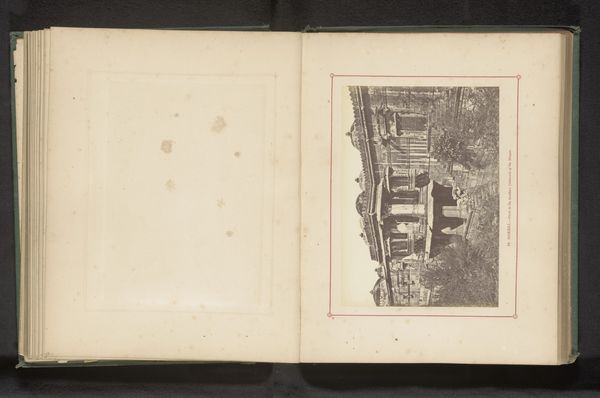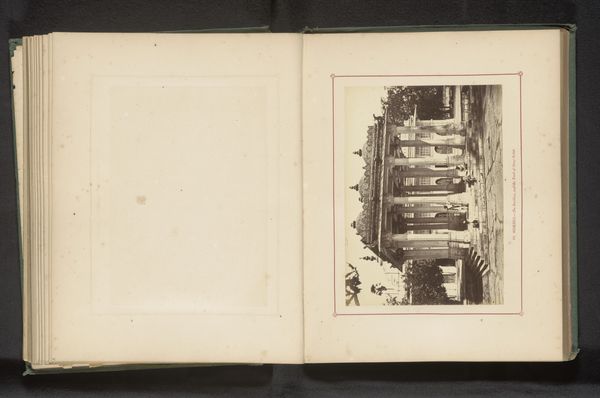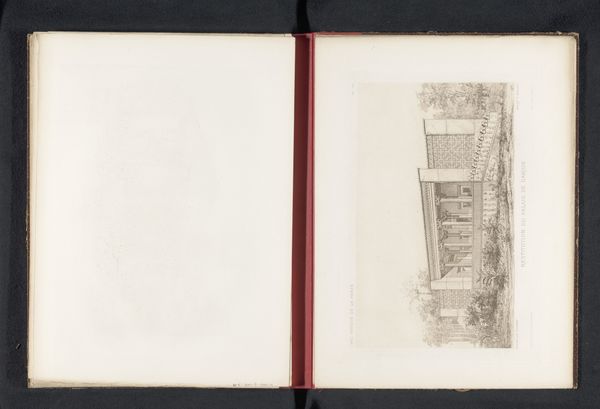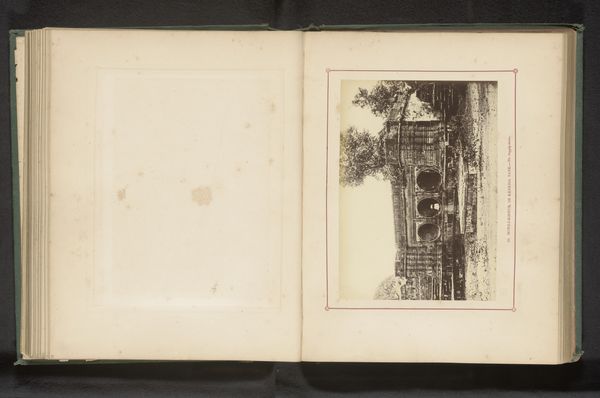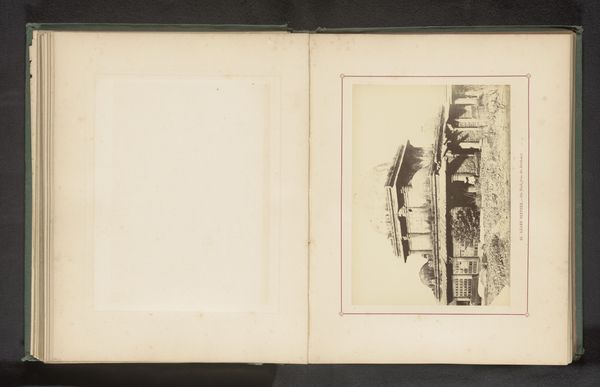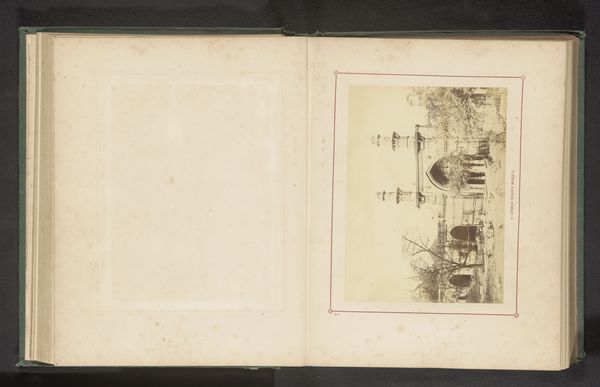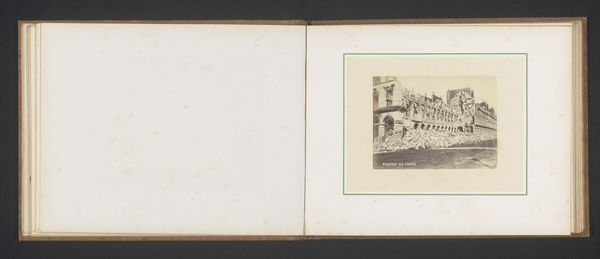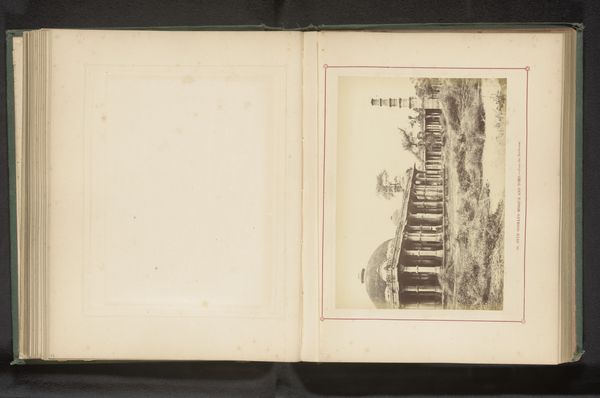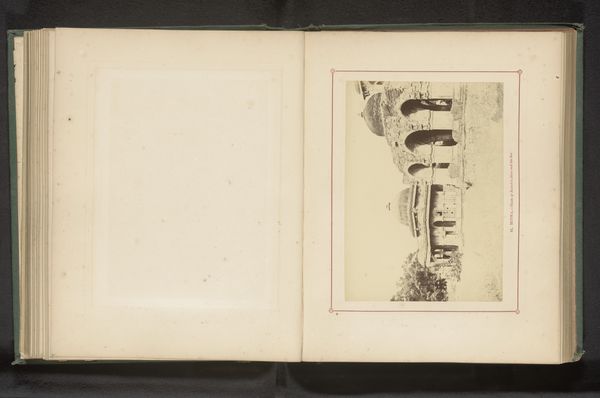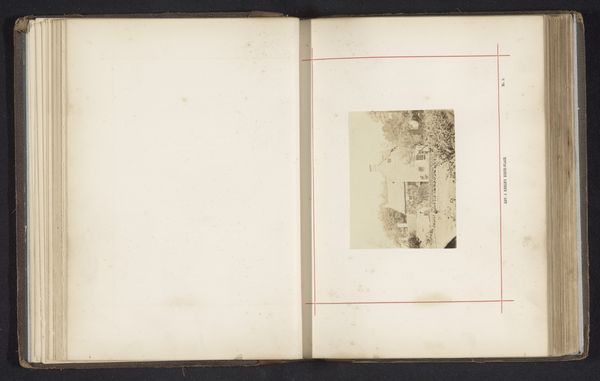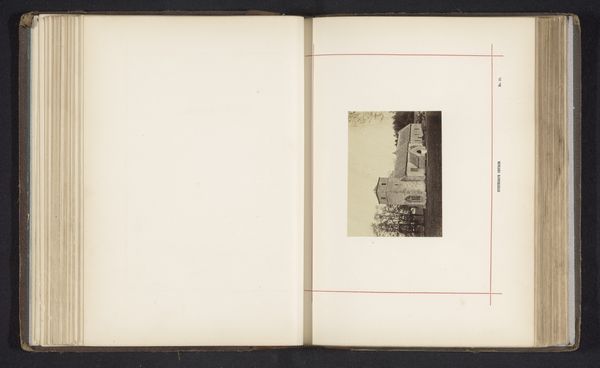
drawing, print, paper, ink, engraving, architecture
#
drawing
# print
#
landscape
#
paper
#
ink
#
engraving
#
architecture
Dimensions: height 189 mm, width 270 mm
Copyright: Rijks Museum: Open Domain
Curator: This is an engraving titled "Gezicht op het paviljoen van Aynekhane," or "View of the Aynekhane Pavilion," created before 1885 by Jane Dieulafoy. It combines drawing, printmaking, ink, and paper techniques to depict this architectural structure. Editor: My first thought is of a fading grandeur, the strong vertical lines of the columns creating a powerful yet melancholic feel. Curator: Dieulafoy’s work provides an invaluable perspective. Her detailed drawings offer us insights into the cultural memory of that specific historical era. The image captures not just the structure, but perhaps also the atmosphere and societal context in which it existed. Editor: I find it interesting how the architecture itself is almost anthropomorphic; the columns could be interpreted as figures standing guard, suggesting resilience or endurance through time. What were structures like this generally used for? Curator: Pavilions like these often functioned as symbols of power, and provided a space where societal image, cultural memory, and architecture combined, particularly for ceremonies and display. This pavilion becomes a projection of these historical ideas. Its rendering, then, serves a crucial political and cultural role. Editor: Considering its symbolic function, the monochromatic palette chosen by Dieulafoy adds a layer of somber reflection, evoking the feeling that these moments in time are being respectfully memorialized. Did she primarily depict architectural subject matter? Curator: Her artistic focus often explored similar architectural and landscape settings. She sought to document and share them with a European audience, often highlighting elements of "Eastern" exoticism through architectural imagery and their socio-political underpinnings. She played a role in how those elements were portrayed back in the west, either celebrating the cultural power dynamics or creating a nostalgic sense for what might be "lost." Editor: I'm struck by the sense of transience communicated through her lens, where a sense of the weight of cultural change permeates the image. Looking again I notice also the framing of nature withing and around the structure itself, suggesting this dance between artifice and landscape, nature and the man-made that adds nuance and a rich contemplative depth. Curator: Yes, looking at Dieulafoy's choices here, the framing and perspective indeed seem to reflect both meticulous historical observation and a touch of nostalgic introspection on those societies and cultures she encountered. Editor: Indeed, a powerful echo of enduring motifs intertwined with cultural history!
Comments
No comments
Be the first to comment and join the conversation on the ultimate creative platform.
